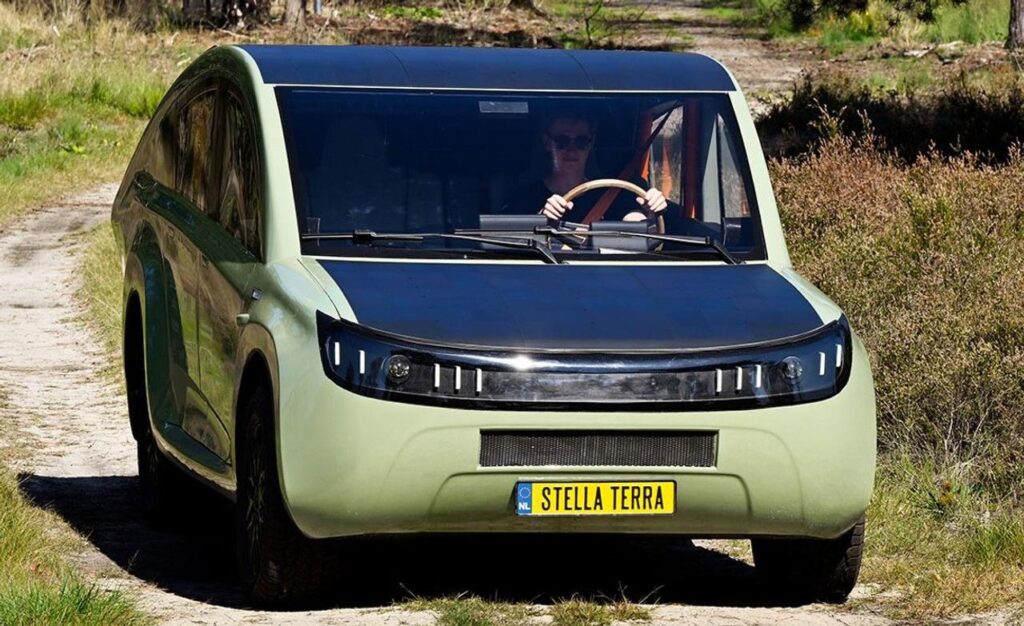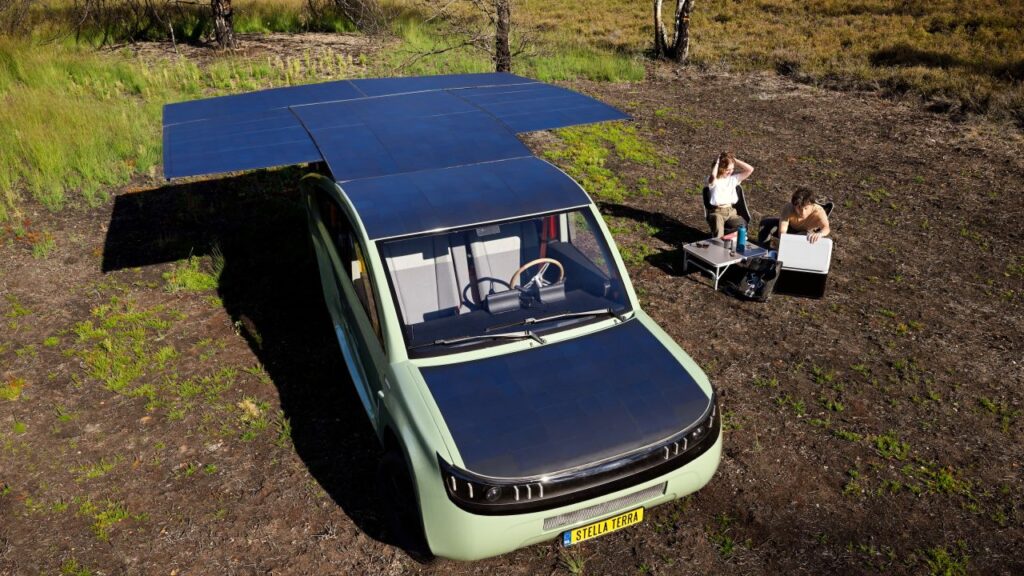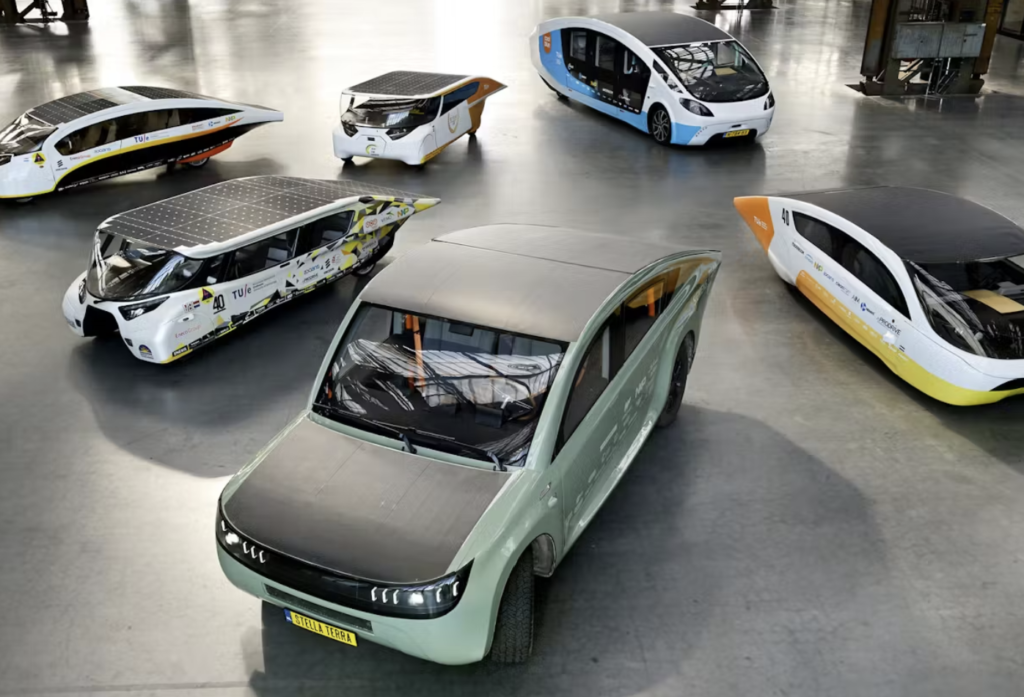
Imagine a car that can travel anywhere without the need for fuel or a charging station. A vehicle powered entirely by the sun, self-sufficient and capable of conquering even the roughest terrains. This is no longer a fantasy—it’s a reality brought to life by Stella Terra, the latest solar-powered car that has taken the world by storm.
A 1000-Kilometer Solar-Powered Journey
In October 2023, the Stella Terra completed an incredible 1,000-kilometer journey from Northern Morocco to the Sahara, running entirely on solar power. Unlike previous solar vehicles designed primarily for urban environments, Stella Terra proved its capability by navigating dry riverbeds, dense forests, steep mountain trails, and loose desert sand. This groundbreaking achievement signals a shift in the potential of solar vehicles—from niche experimental projects to practical, real-world alternatives for off-grid transportation.
The Engineering Behind Stella Terra
Though Stella Terra is making headlines now, it is the product of years of research and innovation. The car was developed by Solar Team Eindhoven, a group of 22 students from the Eindhoven University of Technology. The team has a remarkable track record, having built solar cars that won four consecutive World Solar Challenge races between 2013 and 2019.
The World Solar Challenge is an international competition where solar-powered cars traverse 3,000 kilometers through the Australian outback. However, despite their success, the team decided to step away from the competition to focus on making solar technology more viable for everyday use. The strict regulations of the race—such as limits on car weight, battery size, and solar array dimensions—restricted their ability to innovate beyond the competition’s constraints. This led to the development of Stella Terra, a car designed not just for racing, but for real-world functionality.
An SUV-Like Design for Rough Terrain
Unlike typical solar cars that have sleek, low-profile designs, Stella Terra resembles an off-road SUV. It features:
- Higher ground clearance for rough terrains
- Wider wheels for better stability on sand and rocky paths
- A lightweight glass fiber body that enhances efficiency
- A robust suspension system designed specifically for challenging landscapes
Despite its rugged appearance, the car remains incredibly lightweight at 1,200 kg—significantly lighter than a Tesla Model 3, which weighs around 1,800 kg. This reduced weight contributes to its impressive energy efficiency.
Impressive Performance and Efficiency
The estimated battery capacity of Stella Terra is around 60 kWh, allowing it to travel 630 kilometers on a sunny day. It also boasts a top speed of 145 km/h (90 mph).
For comparison, a Tesla Model 3 with a similar battery pack has a lower efficiency due to its added weight. The key to Stella Terra’s high efficiency lies in its aerodynamic design, lightweight materials, and advanced solar technology.
The car is equipped with Sunpower Maxeon solar cells, which are over 24% efficient. These cells are integrated using Skylar lamination technology, which enhances energy capture by reducing reflection and optimizing light absorption. When parked, additional solar panels can be deployed, expanding the total solar collection area to 16 square meters—providing extra energy while also serving as a sunshade.

Innovative Motor and Power Systems
One of the most unique aspects of Stella Terra is its in-wheel motor system. Instead of a traditional centralized motor with a drivetrain, the team utilized Protean Pd18 in-wheel motors, which provide several advantages:
- Eliminates drivetrain losses, improving energy efficiency
- Reduces mechanical complexity, making the car more reliable
- Frees up space, allowing for a larger battery pack
- Delivers high torque (1400 Nm), essential for off-road performance
The team also designed their own transformer and MPPT boards to optimize the conversion of solar power into usable energy, achieving an impressive 97% electrical efficiency.

A Vision for the Future of Solar Mobility
Beyond its groundbreaking technology, Stella Terra serves as an inspiration for the future of sustainable transportation. The car proves that solar-powered vehicles are not limited to smooth city roads—they can now handle rugged landscapes, making them ideal for remote regions with underdeveloped road networks and unreliable power grids.
Mass production could significantly reduce costs, making solar-powered travel accessible to more people worldwide. With major automotive manufacturers possessing far greater resources than a student team, the hope is that they will build upon this innovation and bring solar mobility into the mainstream.
In a world facing climate change and energy crises, Stella Terra offers a glimpse into a future where vehicles are not just electric, but fully self-sustaining—powered entirely by the limitless energy of the sun.
